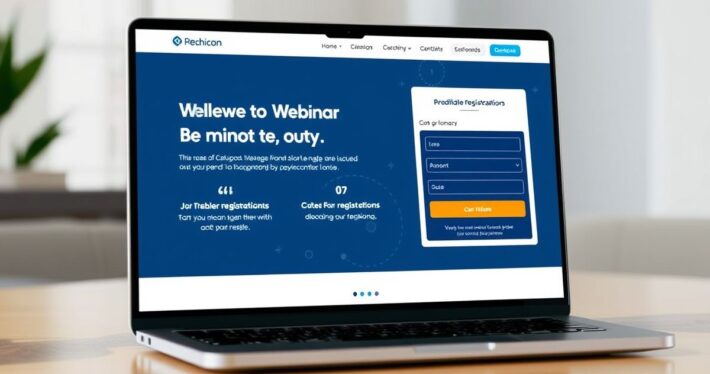Best Webinar Platforms & Software

In today’s digital landscape, webinars have become a powerhouse for businesses to educate, engage, and convert audiences. But let’s be honest—not all webinar platforms are created equal. Whether you’re hosting a live event, an automated webinar, or a hybrid experience, choosing the right software can make or break your results. In this guide, we’ll dive into the best webinar platforms and software for 2024, breaking down their features, pricing, and unique strengths so you can make an informed decision.
Why the Right Webinar Platform Matters
Before we jump into the specifics, let’s talk about why your choice of webinar platform is so important. Think of it as the foundation of your event. A great platform ensures smooth delivery, seamless audience interaction, and professional presentation. On the flip side, a subpar tool can lead to technical glitches, poor engagement, and missed opportunities.
Now, here’s where it gets interesting: the best platform for you depends on your goals. Are you focusing on lead generation? Product launches? Training sessions? Different platforms excel in different areas. Let’s explore the top contenders.
Top Webinar Platforms & Software for 2024
1. Zoom Webinars
Zoom is practically a household name, and its webinar platform is no exception. Known for its reliability and ease of use, Zoom Webinars is ideal for live events with up to 10,000 attendees (depending on your plan).
Key Features:
- Intuitive interface
- Breakout rooms for small-group discussions
- Integration with CRMs like HubSpot and Salesforce
- Analytics for tracking attendee engagement
Best For: Businesses of all sizes looking for a straightforward, reliable solution.
Limitations: Advanced features like automation and evergreen webinars aren’t available.
2. Demio
Demio is a fan favorite for marketers who want a sleek, professional look without the technical headaches. Its evergreen webinar capabilities and robust analytics make it a standout choice.
Key Features:
- Evergreen and live webinar options
- Customizable registration pages
- Real-time engagement tools (polls, Q&A, handouts)
- Integration with email marketing platforms
Best For: Marketers focused on lead generation and automation.
Limitations: Higher price point compared to some competitors.
3. WebinarJam
If you’re looking for a feature-packed platform with a focus on conversions, WebinarJam is worth considering. It’s designed to help you create high-converting webinars with ease.
Key Features:
- Built-in email marketing tools
- Ability to stream to multiple platforms simultaneously
- Interactive tools like polls and chats
- Evergreen and automated webinar options
Best For: Entrepreneurs and businesses focused on sales and conversions.
Limitations: The interface can feel overwhelming for beginners.
4. GoTo Webinar
GoTo Webinar is another veteran in the space, known for its stability and professional features. It’s a solid choice for corporate training and large-scale events.
Key Features:
- High attendee capacity (up to 3,000)
- Customizable branding options
- Detailed analytics and reporting
- Integration with CRMs and marketing tools
Best For: Enterprises and organizations hosting large events.
Limitations: Limited evergreen webinar options.
5. Livestorm
Livestorm is a browser-based platform that’s gaining traction for its simplicity and versatility. It’s a great option for teams that want to collaborate seamlessly.
Key Features:
- No downloads required (browser-based)
- Automated and on-demand webinars
- Team collaboration features
- Integration with popular tools like Slack and Zapier
Best For: Teams looking for a collaborative, easy-to-use platform.
Limitations: Limited customization options for registration pages.
How to Choose the Best Webinar Platform for Your Needs
Here’s the deal: the “best” platform depends on your specific goals and budget. To make the right choice, ask yourself these key questions:
- What’s my primary goal? (e.g., lead generation, sales, training)
- What’s my budget? (don’t forget to factor in scalability)
- What features are non-negotiable? (e.g., automation, analytics, integrations)
- How tech-savvy is my team? (some platforms are more user-friendly than others)
And let’s not forget about scalability. As your business grows, you’ll want a platform that can grow with you.
Real-World Example: How Company X Boosted Conversions with the Right Platform
Let’s look at a quick case study. Company X, a SaaS startup, was struggling to convert webinar attendees into paying customers. They were using a basic platform that lacked robust analytics and engagement tools.
After switching to Demio, they implemented evergreen webinars and used the platform’s detailed analytics to track attendee behavior. The result? A 40% increase in conversions and a 25% boost in attendee engagement.
Bonus Tips for Webinar Success
Choosing the right platform is just the first step. Here are a few extra tips to ensure your webinars are a hit:
- Engage your audience: Use polls, Q&A sessions, and interactive tools to keep attendees involved.
- Test your tech: Always run a tech check before going live to avoid last-minute issues.
- Follow up: Send a post-webinar email with a recording, slides, and a clear call-to-action.
- Optimize for conversion: Use tools like our AI-powered Webinar Offer Builder to structure irresistible offers.
Final Thoughts
The best webinar platform for you is the one that aligns with your goals, budget, and technical skills. Whether you’re a solopreneur or a large enterprise, there’s a tool out there that’s perfect for your needs.
So, what’s your next move? Take the time to evaluate your options, test a few platforms, and don’t be afraid to invest in a tool that will help you create professional, high-converting webinars. After all, your webinar platform isn’t just a tool—it’s a partner in your success.



